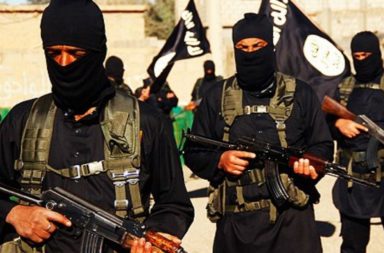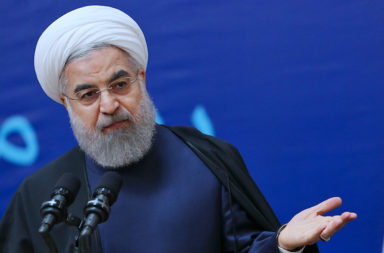Saudi Arabia is looking to flex its political muscle in Syria again.
A new round of diplomatic talks have begun between the United States and Saudi Arabia. This is happening despite the crumbling negotiated ceasefire between pro-Assad and opposition forces established earlier this year.
Tensions between the US and Saudi Arabia have been strained since the Obama Administration brokered a nuclear deal with Iran, the Kingdom’s long-time regional rival, and since the recent news that Saudi Arabia could be implicated in the 9/11 terrorist attacks.
With diplomatic tensions so high, the international community is seriously questioning how two of the major international players in the Syrian Crisis will be able to work together. In the broad scheme of international diplomatic relations it seems as though the only thing that they can agree upon is that Assad should be removed from power—and even then they struggle over how that change should come about.
This power struggle between the two states, along with the vying interests of the various militant factions on the ground could doom the upcoming round of peace talks before they ever get the chance to get off the ground.
Saudi Arabia and the Syrian Civil War
It’s no secret that the country has been a steady supporter of anti-Assad militants since the beginning of the uprisings in Syria in 2011.
Riyadh has been calling for the removal of President Assad since the conflict began. In fact, the Saudis have given heavy handed suggestions on how Assad’s regime could end—either with him handing over power willingly or having to take it by military force.
To this end, the Saudi government has been good on its word of wanting Assad gone, and has been arming anti-Assad militant groups.
In support of ending the Syrian Civil War, Saudi Arabia has been supporting moderate militant groups since 2011. However, the government has been increasingly willing to support more Islamist and groups that identify as having a Salafist or jihadist orientation.
The shift towards lending aid in the form of weapons and supplies to more Islamist groups is an interesting one, considering that many of them have also directly challenged the legitimacy of the Saudi government itself.
To a casual observer, this particular shift seems to contradict the power of the Saudi Arabian Government. However, it is of critical importance to keep in mind what Saudi Arabia sees as its most critical foreign policy objectives.
The ultimate goal for Saudi Arabia is to consider the Russia/Iran/Saudi Arabia axis of power in the region.
The Saudi government sees one of its most pressing priorities as supporting allies that work against the expansionist powers of Russia and Iran. Given this context, one can begin to see why the Saudis would support Islamist groups that oppose the Assad regime (and by default, also oppose Russian influence in the region). These fundamentalist groups are representative of a similar brand of state-Salafism that Saudi Arabia has promoted for decades. Indeed, many of these groups express wanting to see a non-ISIS, Islamic state in Syria as the reason that they are currently fighting the Assad regime. Riyadh has the self-imposed diplomatic task of embracing these groups in a way that will still allow for their particular brand of Wahhabist Islam.
These two goals are not irreconcilable, although they do represent a particular type of balancing act for the Saudi government.
The US & Saudi Arabia—Peace in the Middle East?
It should go without saying that Saudi Arabia’s support for the various Islamist groups currently involved in the Syrian Civil War have been a serious contributing factor for its chilly relationship with Washington.
The Obama Administration has found itself in a tough diplomatic position with mounting international pressure to intervene into Assad’s war on civilians and with domestic pressure to keep the US from entering into another costly war in the Middle East.
Together, the US and Saudi Arabia have had very public—and frequent—clashes with each other on issues related to policy. The Saudi’s are adamant that Assad can have no place in diplomatic peace talks. By contrast, the past few months have seen the US relaxing its position on Assad’s removal from office.
The future in Syria and the wider Middle East is far from certain. However, one lesson that can be learned from all parties is the danger in supporting radical Islamist groups in a military overthrow of a government. International peace and security are fragile things and history has shown us that supporting extremism, even in support of noble goals, can have disastrous long-term effects.
While it is incredibly obvious that the US-Saudi support a common goal of a conflict-free Syria, they have disagreed in very fundamental ways on the place of various Islamist groups in reaching that goal. The two governments also struggle over questions of how necessary it is to see Assad completely removed from power.
These problems are only compounded when we pull in the interests of other key power players in the Syrian Civil War, such as Turkey, Russia, and–of course–President Assad himself.
The most recent round of peace talks that are taking place in Geneva this week are already faltering. Tensions over militants breaking the brokered cease-fire agreement loom large in fracturing the trust between the major state actors at the negotiating table.
The stakes are undoubtedly high this time around. The conflict in Syria has killed more than 250,000 people, created the world’s worst refugee crisis, and drawn regional powers into a long-term military engagement that only promises to drag on should the peace talks prove to be unsuccessful.
Given the way that the talks have already stuttered to a halt, it seems unlikely that any meaningful outcomes will come from this round of negotiations.




